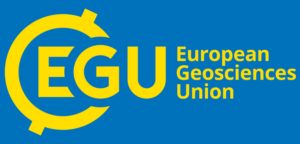Hydrological forecasting @ EGU 2016
 The call for abstracts of the EGU General Assembly 2016 has just been launched. The meeting will take place in Vienna, Austria, from 17-22 April 2016.
The call for abstracts of the EGU General Assembly 2016 has just been launched. The meeting will take place in Vienna, Austria, from 17-22 April 2016.
In this post, I would like to draw your attention to the sessions organized by the Hydrological Forecasting sub-division. Under the umbrella of the Division on Hydrological Sciences, you can find the programme proposed here (check HS4.1 to HS4.10).
This year we have new sessions and new conveners helping to organize the programme. Here you can find some information that I think might be useful if you are planning to submit abstracts for oral, poster and PICO presentations:
What is the “Hydrological Forecasting sub-division”?
First of all, we are a group of people interested in hydrological forecasting and its applications. The group was chaired in the past by Jan Szolgay and Elena Toth and, currently, is being chaired by me.
We try to cover all topics of interest that focus on the estimation of future hydrological states. Besides organizing the sessions at EGU, we also organize a side meeting during the assembly. Through the HEPEX blog, we offer tips to better plan your scientific agenda in Vienna (have a glimpse here for the tips we provided last year).
We believe hydrological forecasting has many challenges today, from producing accurate and reliable forecasts operationally to implementing user-friendly visualisation products and developing innovative water services to support users and decision-makers.
| [read more=”You can read more about the general interests of the sub-division here” less=”Read less”]
Efficient hydrological forecasting is required by several water sectors, as they are essential for managing floods, droughts and other water-related risks. In addition, hydro-meteorological forecasting systems are increasingly being developed to answer to the needs of economic sectors sensitive to weather and climate variability (e.g., water supply, hydropower, agriculture, tourism, navigation). Forecasting systems provide information on predictions and future scenarios, and explicit estimates of hydro-meteorological uncertainty as input to the decision-making processes of their users. Today, hydrological forecasting has many challenges: producing accurate and reliable forecasts operationally for water and risk management applications, accessing real-time data networks and assimilating these data in the forecasting process, developing reliable tools for evaluating risk and probabilities of extreme events, integrating economic models for informed decision-making, making best use of human expertise in ensemble-based and probabilistic forecasting systems, documenting the societal responses and impacts of extreme events, as well as implementing user-friendly visualisation products and dialogs to support real-time procedures. [/read] |
| Scientific sessions under the umbrella of the Hydrological Forecasting Sub-Division aim to promote knowledge on current advances and approaches that leverage state-of-the-art techniques and datasets to develop new methods, products and better services for customers in the water sector and users of hydro-meteorological forecasting systems (e.g., public water agencies, hydropower companies, flood forecasting centres, agricultural enterprises). |
Topics of interest include:
- coupled meteorological-hydrological forecasting models for gauged and ungauged catchments,
- flash flood forecasting and associated hydro-geomorphic processes,
- predictive uncertainty estimation,
- data assimilation and pre-/post-processing in real-time,
- hydrological ensemble prediction,
- monitoring and forecasting drought and water scarcity,
- sub-seasonal to seasonal forecasting,
- model and forecast evaluation,
- outlooks and communication of alerts and forecasts,
- decision-making and response in hydrological forecasting systems,
- operational forecasting and warning for natural hazards, and
- innovation to water resources management through weather, climate and water services.
A Hydrological Forecasting PICO session at EGU in 2015
Hydrological Forecasting targets different time scales (short-term, medium-term, and long-term) and different spatial scales (from local to regional and global scales).
A total of 45 conveners and co-conveners propose 10 sessions (including co-organizations), focusing on a broad range of topics. You only have to choose the session(s) that fits more into your work(s) and propose your abstract(s):
- Flash floods and associated hydro-geomorphic processes: observation, modelling and warning (main convener: Isabelle Braud, Irstea, France)
- Predictability and predictive uncertainty estimation in hydrologic forecasting (main convener: Albrecht Weerts, Deltares, The Netherlands)
- Ensemble hydro-meteorological forecasting (main convener: Fredrik Wetterhall, ECMWF, UK)
- Drought and water scarcity: monitoring, modelling and forecasting to improve hydro-meteorological risk management (main convener: Jürgen Vogt, EC JRC IES, Italy)
- Operational forecasting and warning systems for natural hazards: challenges and innovation – PICO Session (main convener: Femke Davids, Deltares, The Netherlands)
- Sub-seasonal to seasonal forecasting in hydrology and outlooks for water services (main convener: Florian Pappenberger, ECMWF, UK)
- Hydrological forecasts and predictions: communication and decision-making (main convener: Jan Verkade, Deltares, The Netherlands)
- Climate Servicing Water Users by linking weather forecasting to climate projection (main convener: Bart van den Hurk, KNMI, The Netherlands)
- Coupled atmosphere-hydrological modeling for improved hydro-meteorological predictions (main convener: Harald Kunstmann, KIT IMK-IFU, Germany)
- Advances in statistical post-processing for deterministic and ensemble forecasts (main convener: Stéphane Vannitsem, IRM, Belgium)
 It can always be interesting to propose an abstract for an oral presentation together with also abstracts for posters or PICO presentations since, in these cases, you may have more opportunities to get in close contact with participants and more time to discuss your newest results or ongoing work.
It can always be interesting to propose an abstract for an oral presentation together with also abstracts for posters or PICO presentations since, in these cases, you may have more opportunities to get in close contact with participants and more time to discuss your newest results or ongoing work.
What should I do to participate?
- Check the description of the sessions and find out the ones that best fit your research and the study (or the studies) you want to communicate.
- Deadline: you have up to 13 Jan 2016, 13:00 CET, to propose your abstract through the EGU website. Follow this link here.
- Then, just come to Vienna and join us at the sessions, social and other side meetings!
If you want to apply for financial support from EGU, check the opportunities here and submit your support application before: 01 Dec 2015
EGU is a great opportunity to meet and discuss science and operational achievements. Come to Vienna in April and join us there!

0 comments